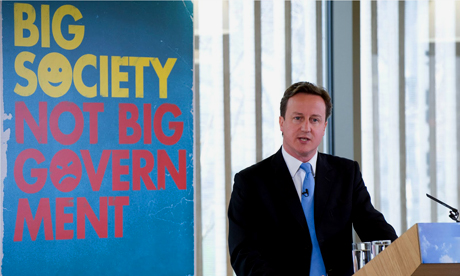NHS changes: David Cameron’s dodgy prescription

David Cameron described planned changes to the NHS as reorganisation from the 'bottom up'. Photo By Andrew Parsons
At the beginning of his keynote speech on public services, David Cameron insisted that he “wants to do right by NHS staff”. Yet he has set himself at loggerheads with the 1.3 million men and women who make up that staff. The leaders of a range of professional organisations and trade unions, who actually represent staff, have made it clear that they consider the proposed NHS changes “extremely risky and potentially disastrous”. Nor had Cameron improved matters by referring to the NHS earlier in the day as a “second-rate” service and talking about his changes as a “route out of poor service”.
Cameron dismissed his critics later in the same speech, as people who wanted a “race to the bottom”. It was a silly remark. It is difficult to see what possible motive doctors and nurses would have to consciously drive down standards in the NHS. But the real case against the “reform” is clear. There is the cost. On the radio Cameron claimed it would only cost £1.4bn. Health economists say that it will cost nearer £3bn, and this is before you factor in the cost of making thousands of primary care trust staff redundant. And there is the timing; NHS staff grew weary of endless reorganisation under my own government. So Cameron went so far as to promise that he would not introduce any more “top-down” reorganisations. But that was before the election. Instead, the election safely out of the way, he has introduced this car crash of a policy.
But there are also objections to these changes in principle. Cameron is introducing competition between hospitals on price, which experts believe will drive down quality. And more fundamentally, because of these changes, the NHS will morph from a directly managed system of healthcare into a regulated industry of competing providers. It is the difference between an army run from the centre and the government giving over the defence of the realm to a bunch of competing mercenaries. (Obviously they would need a regulator. Ofsick, perhaps?) The Tories would not dream of organising defence in this way. Why are they introducing this system for healthcare?
Cameron had the cheek in his speech to describe the Tory “reform” as reorganisation from the “bottom up”. The truth is that these changes are the brainchild of his hapless secretary of state Andrew Lansley, and the speed and scale of came as a complete surprise to everyone in the NHS. Cameron cannot pretend to be the friend of NHS staff and ignore their representatives. And his protestations of love for the service are at odds with saying it is second-rate. It is becoming clearer by the day that Tory “reform” is not about improving the NHS, but reshaping the service to drive forward a marketisation agenda. Towards the end of his press conference Cameron was reminded that patient satisfaction with the NHS was at record levels. He was then asked “What he would do if patient satisfaction levels dropped?” Answer came there none. This is because these changes are not about “doing right” by patients or staff. They are designed to meet the political objectives of a Tory-led government. And all Cameron’s warm words will not disguise this.
• This article was amended at 18:12 on 17 January 2011. It originally made several references to NHS reforms. A reform is an improvement or change for the better. As the author does not believe this to be the case here, we have replaced these references with more neutral terminology
guardian.co.uk © Guardian News & Media Limited 2010
Published via the Guardian News Feed plugin for WordPress.
